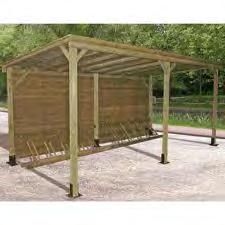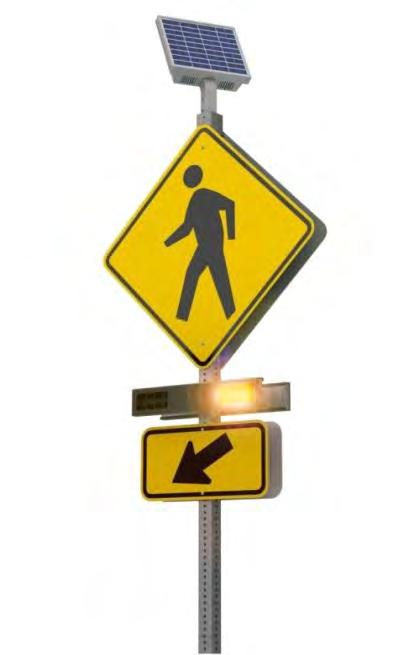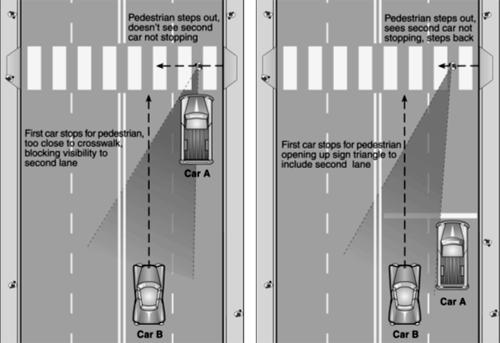
4 minute read
Engineering
Engineering
Engineering strategies including planning and implementing physical improvements that make it safer and more attractive to walk and bicycle to school. Engaging planners and engineers is crucial to successfully implementing safety improvements. It’s also important to reach out to the community to educate neighbors about the benefits and importance of any proposed improvements. Objective 1: Examine current city ordinances and school policies Discuss the current bussing policy for children in Battle Lake (Short-term) o Establishing a minimum distance from the school bus pick-up will encourage more students to walk and bike to school Include sidewalks and trails in the 5-year CIP plan/pavement management plan (Longterm) Formalize a snow removal policy (Short-term) This is a unique school in that it is located within the community and houses all its students in one building. Both of these attributes are strengths from a Safe Routes to School perspective and special consideration should be given to preserving them. (Longterm)
Objective 2: Identify and modify infrastructure to improve safety Identify key intersections and create pedestrian enhancements. Some recommendations include but are not limited to: (Short-term) o Stop or yield sign at corner of Bowman and McKinley Ave o Crosswalk at corner of Holdt St/County Hwy 83 and Olaf Ave o Improved lighting, signage or additional safety measures at corner of Holdt St/County Hwy 83 and Olaf Ave o Crosswalks at the corner of McKinley Ave N & Summit St W be repainted in all directions o Improvements to multiple crossings on Lake Avenue (this is being completed as part of the Hwy 78 project) o Make improvements to other locations as identified
Identify key routes and add pedestrian/bike infrastructure (sidewalks/trails/bike racks/other) as funding becomes available. Some recommendations include but are not limited to: o The route project identified in the 2013 Safe Routes to School infrastructure solicitation (Long-term) Sidewalk/trail from the school along Roosevelt and continuing along Olaf Avenue to Moen Drive Sidewalk along Main Street from Roosevelt Avenue to Lincoln Avenue Enhanced Crossing at Olaf Avenue and Holdt Street/County Hwy 83 See attachments for grant application o Sidewalk/Trail along Roosevelt Ave (Long-term)
o Sidewalk/Trail along N McKinley Ave (Long-term) o Sidewalk/Trail along Olaf Ave (Long-term) o Sidewalk/Trail along Bowman St (Long-term) o Sidewalk/Trail along South side of Summit St (Long-term) o Discuss making Roosevelt a 1-way for car traffic (Short-term) o Discuss traffic calming measures on Holdt St/County Hwy 83 (Short-term) o Consider adding Share the Road signage along Holdt St/County Hwy 83 (Short-term) o Trail running along the south side of Front St, looping to Summit St(Long-term) o Add bike shelters at key locations (Long-term) Could have students build in shop class An example of some of the many designs
o Participate in the PartnerSHIP 4 Health bike rack program to add more bike racks around town (Short-term) o Make improvements to other locations as identified. Battle Lake will change with time and so will the funding sources available. As a result this list is not meant to be a comprehensive list of projects. It is a guide of projects identified throughout this process.

Pedestrian Enhancement Considerations Several of the recommendations above suggest pedestrian enhancements at certain locations. The specific type of enhancement should be evaluated per project and designed with maximum safety in mind. Some examples of pedestrian enhancements include: Pedestrian activated lights at crossings (Long-term) Crosswalks (Short-term) Bump-outs, also known as curb extensions (Long-term) ADA curb cuts (Long-term) Pedestrian islands (Long-term) Narrowing road widths (Long-term) Parking set backs from crosswalks (Short-term) Advance yield markings (Short-term) o These show vehicles where to stop if a pedestrian is in the crosswalk o Stopping further back allows other vehicles to see the pedestrian as well Crossing guards (Short-term) Solar Powered Pedestrian Crossing lights (Long-term) o Flashing LED
Make sure safety is addressed in multiple areas o Sidewalks o Lighting o Crossings o Community watch o Education for safe behaviors both pedestrians and motorists


Community Impact Considerations
A sidewalk can be a way to increase safety for pedestrians of all ages. When sidewalks are in place, children are less likely to walk/bike on the street. This is of particular concern wherever parked vehicles are present because children entering the street from between parked vehicles are often obscured from the vision of drivers. Additionally, sidewalks tend to result in pedestrian crossing activity that is more predictable. When this occurs, more effective signing and pavement marking strategies can be implemented. Further, crossing activity is often more focused to key locations resulting in greater visibility to drivers. Sidewalks also can help encourage people to be more active within their community. This activity can have a positive health impact on the individual as well as a community building impact on the neighborhood. When taking on an infrastructure project that involves sidewalks, understand that while some residents may be excited others may be opposed. Some of the things to consider when siting a sidewalk are:
Impacts on trees and landscaping Maintenance responsibilities Right of way and set backs Perceived lack of need
Cost burden
When considering construction of a new sidewalk, stakeholders affected by the improvements should be notified and solicited for input in the process. A suggestion is to accommodate stakeholders by allowing the sidewalk location to vary within the right of way; hopefully avoiding some of the unwanted impacts mentioned above.







